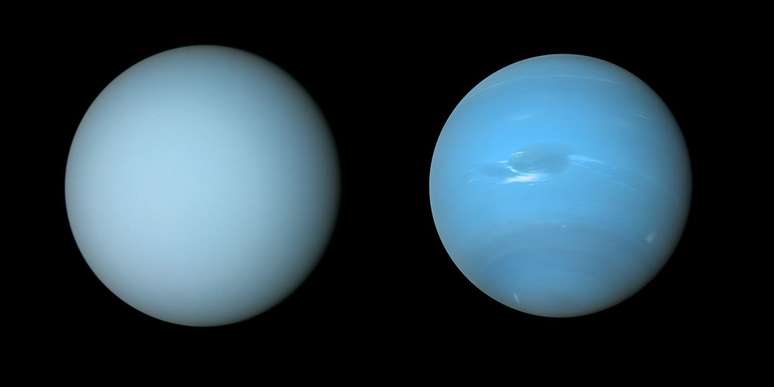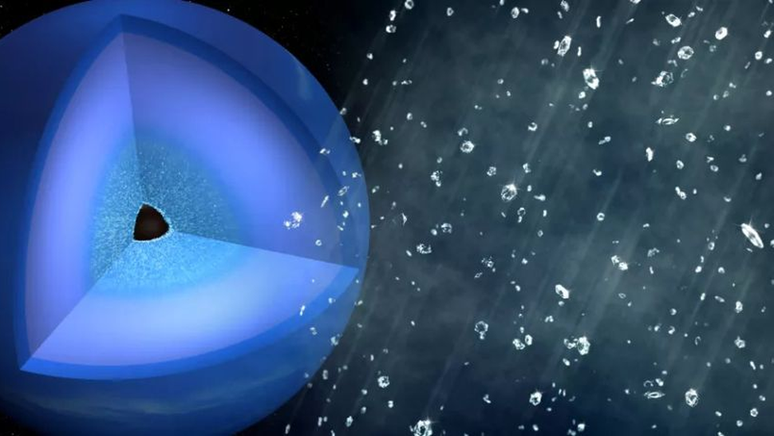Astronomers have long suspected that diamonds rain down on Uranus and Neptune, but a new study shows only one of them has the necessary conditions for it.
Ever since Voyager 2’s flybys of Uranus and Neptune in the 1980s, scientists have been trying to figure out what, after all, makes these planets so different. Now, a new study suggests that one element may be crucial to unraveling the mystery: the rain of diamonds (or lack thereof).
- Planet 9 can finally be found, if it has moons
- How a rocky planet could “eject” Earth from the Solar System
The bottom two planets of the Solar System are icy, but still have some brightness when observed. There is one big difference though: while Neptune glows with its own internal heat, Uranus only gives back the light it receives from the Sun. If so, why do the two look so similar?
It is not easy to decipher the interior of these distant worlds, but scientists already know that under the two atmospheres of hydrogen and helium there are fluid mantles rich in water, ammonia and methane, in addition to possible rain of diamonds falling into rocky cores.
According to a new study, however, such rain may not occur on Uranus. The authors hypothesize that only Neptune presents favorable conditions for the formation of diamond crystals.
Led by Bingqing Cheng, the research points out that such rains would release gravitational energy in the form of heat, just like mereoros do when they burn in our atmosphere. With the friction in the gaseous mantle, diamond gems would produce a temperature increase and this could lead to a significant change in the planet.

The study authors calculated the “freezing point” of carbon and found that under ideal conditions, the carbon and hydrogen separate to create a carbon-rich fluid capable of forming diamonds. These “ideal conditions” are very specific and apparently do not exist on Uranus.
On the other hand, Neptune appears to have these conditions, so crystals can pass through its atmosphere, adding heat to the planet with gravitational energy. Exactly how these swarms might contribute to the warmth of icy planets remains to be seen, but it’s possible they explain why Neptune has its own internal heat.
To test this hypothesis, scientists will need to perform new carbon-freezing calculations on computer models of Uranus and Neptune to uncover the likely influence of diamonds on the planets’ heat budgets. In any case, a definitive answer will only come with new missions to study these worlds up close.
The study was published in Nature communications.
Source: Nature communications; Through: Sky and telescope
Trending on Canaltech:
- Why are we buying fewer and fewer cell phones?
- What does couple lunch box mean?
- What is a Mary Sue character?
- IPTV: Meet 6 services released in Brazil
- Technology Vacancies | Internship programs throughout Brazil
- 10 most watched series of the week (03/19/2023)
Source: Terra
Rose James is a Gossipify movie and series reviewer known for her in-depth analysis and unique perspective on the latest releases. With a background in film studies, she provides engaging and informative reviews, and keeps readers up to date with industry trends and emerging talents.






